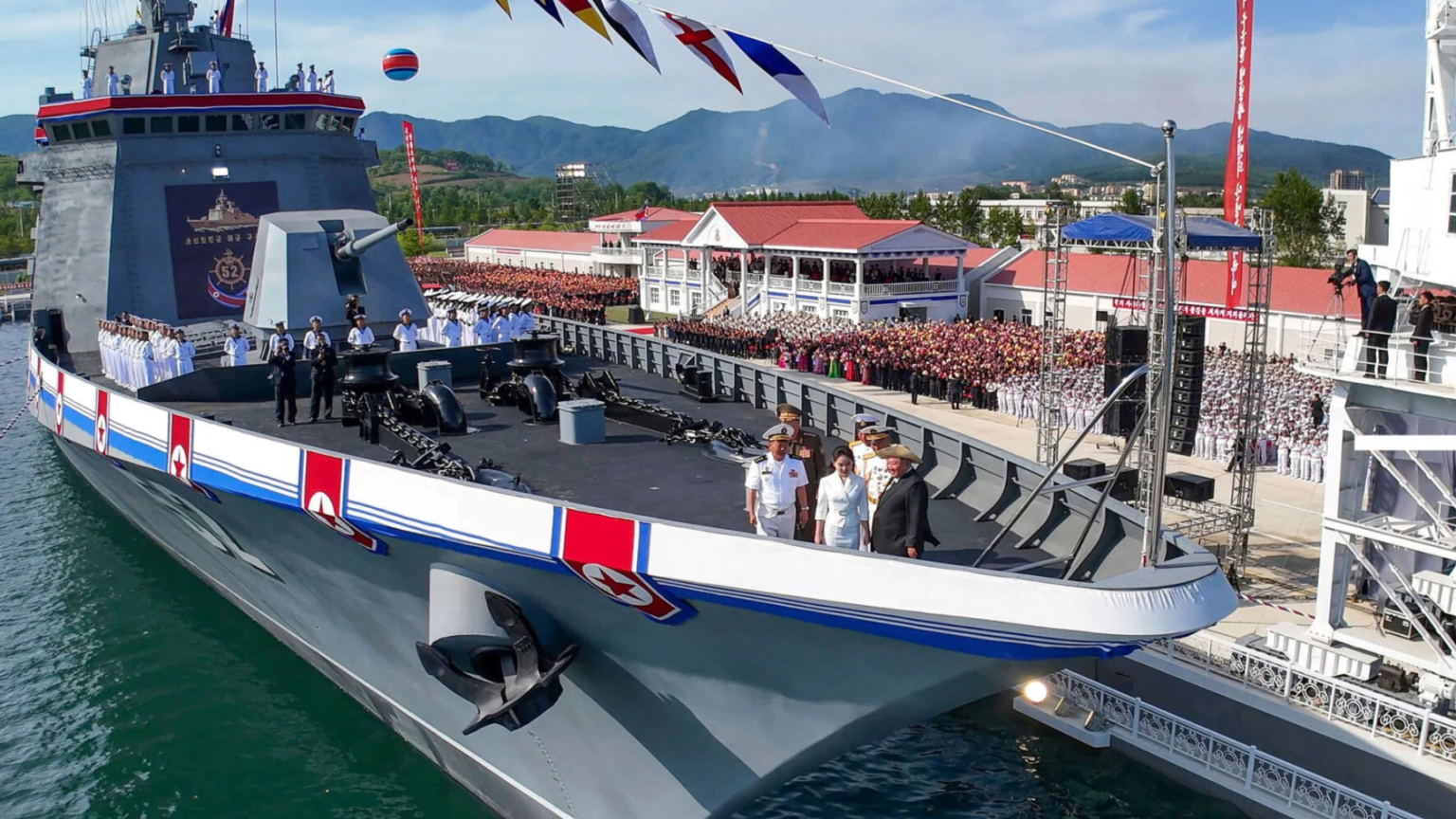Introduction: North Korea Warship Launch Back on Track
North Korea warship launch efforts appear to be back on course after state media reported a successful second attempt at launching a new 5,000-ton naval destroyer. This comes less than a month after the vessel capsized during its initial debut. North Korean leader Kim Jong Un, accompanied by his daughter Kim Ju Ae, personally oversaw the relaunch at Rajin Port in the country’s north, signaling renewed confidence in the country’s naval modernization drive.
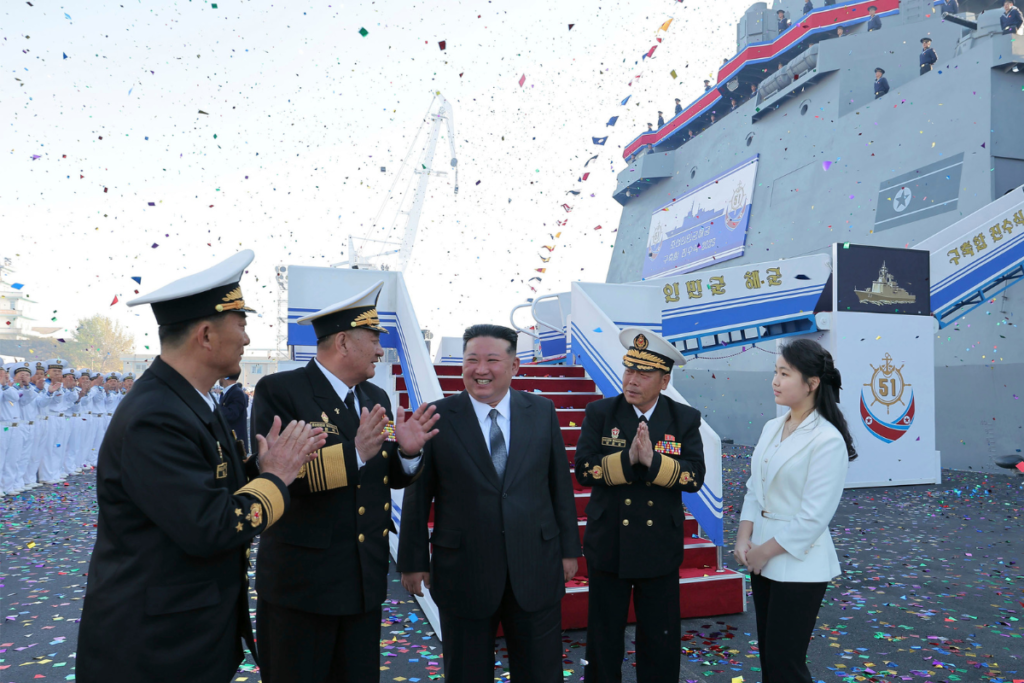
The destroyer, one of two newly constructed warships of this size, marks a major leap in Pyongyang’s maritime capabilities. It also highlights Kim’s ambition to build a nuclear-capable navy as part of a broader military buildup.
First Attempt Fails: North Korea Warship Launch Capsizes
In May, North Korea’s pride in its military engineering took a hit when its brand-new 5,000-ton destroyer capsized shortly after launch. The incident occurred under highly secretive conditions, but satellite imagery later confirmed the ship had overturned in the harbor.
Leader Kim Jong Un was reportedly furious with the failure. According to intelligence sources and confirmed by North Korean state media, at least four officials were arrested, including three shipyard engineers and one senior military planner. The North Korean government demanded immediate repairs, setting an unusually aggressive timeline to restore the vessel to operational condition.
Relaunch at Rajin Port: Second Warship Launch Attempt Succeeds
On Tuesday, June 11, North Korean state media outlet KCNA reported that the destroyer had been fully repaired and successfully relaunched. Photos published by KCNA show Kim and his daughter observing the ship at Rajin Port during the event.
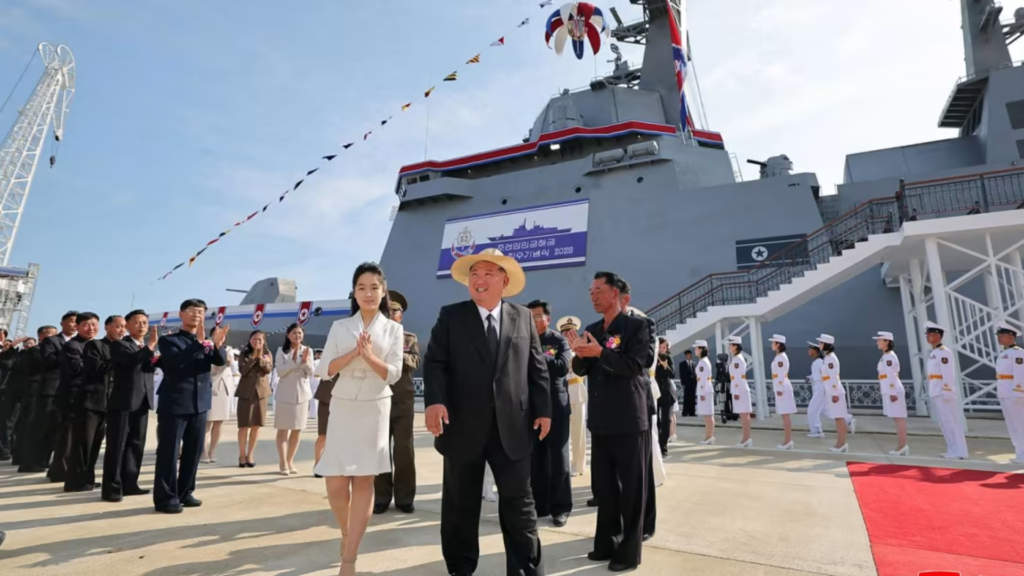
Despite the regime’s assurances, analysts are skeptical. “Given the scale of damage likely caused by the capsize, a full restoration in under four weeks raises serious doubts,” said a senior defense analyst at the International Institute for Strategic Studies (IISS).
Kim Jong Un’s Role in the North Korea Warship Launch
The North Korea warship launch is part of Kim Jong Un’s greater ambition to transform his country’s naval force into a nuclear-capable fleet. Over the past year, North Korea has rolled out two 5,000-ton warships—the largest in its navy—capable of, in theory, launching ballistic missiles, including those with nuclear payloads.
Kim has publicly announced plans to build two more destroyers within the next year, indicating a clear strategic shift toward maritime deterrence. This comes amid rising tensions in the region and escalating U.S.-South Korea military drills, which Pyongyang views as provocative.
Nuclear Ambitions: What the North Korea Warship Launch Signals
Independent satellite imagery reviewed by maritime analysts shows a clear timeline of the ship’s status post-capsize:
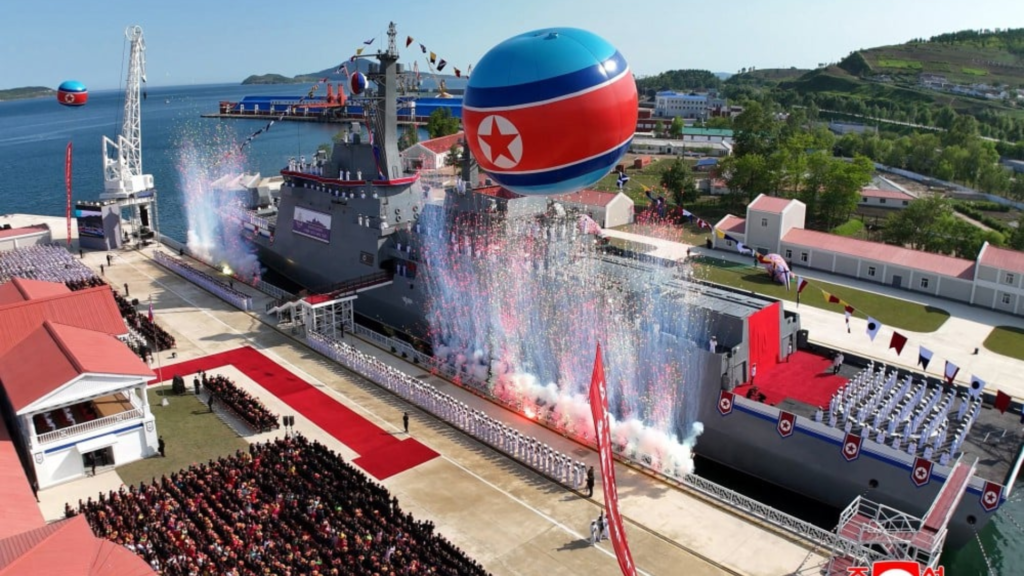
- Early May: The ship is visibly overturned in the harbor.
- Mid-May: The vessel is moved to a nearby dry dock for repairs.
- Early June: The ship appears afloat, docked at the pier in Rajin Port.
This aligns with KCNA’s claim of a rapid repair and re-launch, though questions linger about the ship’s long-term seaworthiness and combat readiness.
Official Remarks: Kim Warns of Regional Power Projection
During the re-launch ceremony, Kim Jong Un delivered a fiery speech, reaffirming North Korea’s commitment to its naval modernization program. He dismissed the initial failure as a minor setback and warned adversaries to prepare for a show of strength.
“Soon, enemies will experience how provocative and unpleasant it is to sit and watch the ships of an adversary run rampant on the fringes of sovereign waters,” Kim was quoted as saying by KCNA.
His comments are being interpreted as a thinly veiled threat toward South Korea, the United States, and Japan—all of which have expressed concern over North Korea’s increasing missile and naval capabilities.
International Reaction: Wary Eyes on Pyongyang
So far, international reactions to the relaunch have been measured but cautious.
- United States: The Pentagon said it is closely monitoring the situation and reaffirmed its commitment to regional allies.
- South Korea: Seoul expressed concerns about potential provocations and emphasized the importance of readiness.
- Japan: Tokyo urged North Korea to return to diplomatic talks and cease further military escalations.
Several military experts have pointed out that the warship’s exact missile capabilities remain unclear, but if nuclear-enabled, the regional security dynamics could shift dramatically.
Military Capabilities: What We Know About the Warship
According to limited information from North Korean media and external intelligence analysis, the new destroyers are equipped with:
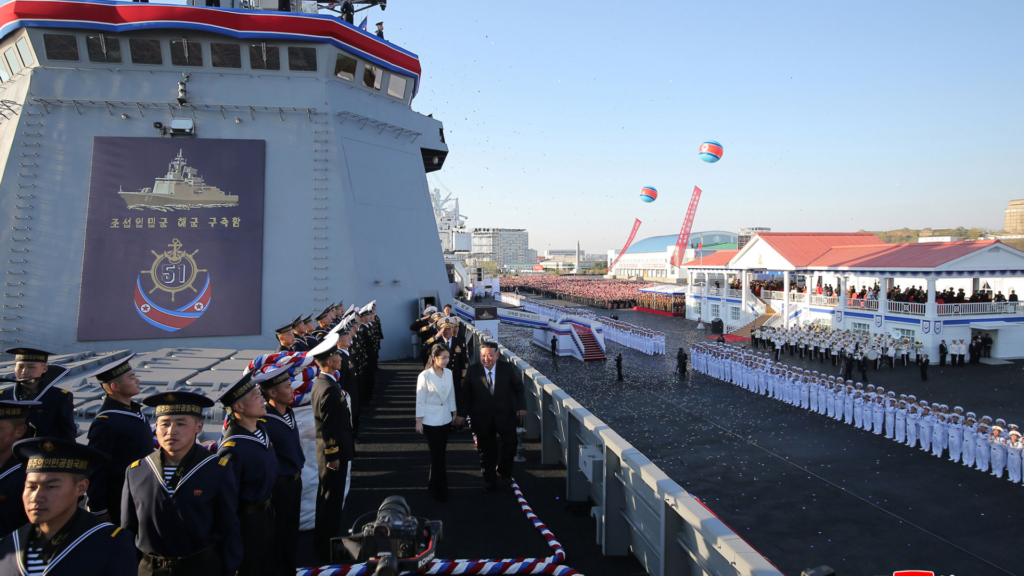
- Vertical launch systems capable of carrying medium-range ballistic missiles
- Surface-to-air and surface-to-sea missile platforms
- Advanced radar systems, possibly reverse-engineered from foreign tech
- Submarine-hunting capabilities and long-range cruise missile systems (unverified)
These warships are not just symbolic. If armed as claimed, they represent a major advancement in North Korea’s asymmetric warfare strategy.
Internal Politics: The Fallout of Failure
The arrests following the failed May launch highlight the pressure on North Korean officials to meet ambitious military timelines. While the state strives to show strength externally, internal accountability measures—often harsh—reveal the regime’s intolerance for setbacks.
Some defectors and analysts argue that these purges serve both as punishment and deterrent, keeping military and engineering personnel in a constant state of pressure.
Looking Ahead: What This Means for Global Security
The successful North Korea warship launch, even if rushed, signals Pyongyang’s persistence in expanding its military reach. The move has several implications:
- Increased maritime risk: Regional navies must adapt to new threats.
- Nuclear proliferation: A nuclear-armed fleet complicates arms control negotiations.
- Sanctions pressure: The international community may push for tighter sanctions in response to military developments.
- Diplomatic stalemate: This launch could stall any hope of denuclearization talks resuming soon.
Conclusion: Symbolism, Strategy, and Suspicion
While the re-launch of the 5,000-ton destroyer may be seen as a symbolic recovery from failure, it also reflects a larger strategic pivot in North Korea’s defense doctrine. Kim Jong Un’s focus on naval capabilities, particularly those with potential nuclear applications, raises serious alarms for regional and global security.
As North Korea warship launch events unfold, analysts, allies, and adversaries alike will continue to scrutinize Pyongyang’s next move—on the sea and beyond.
